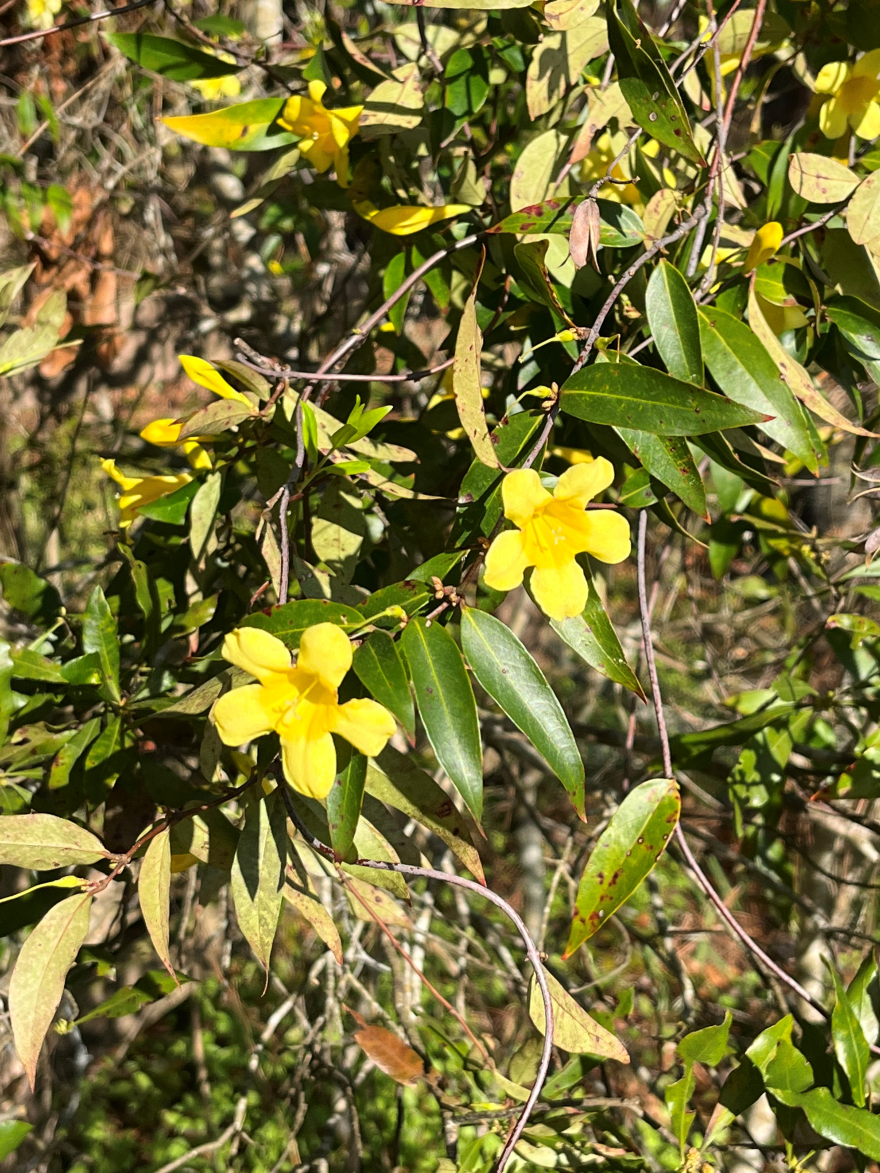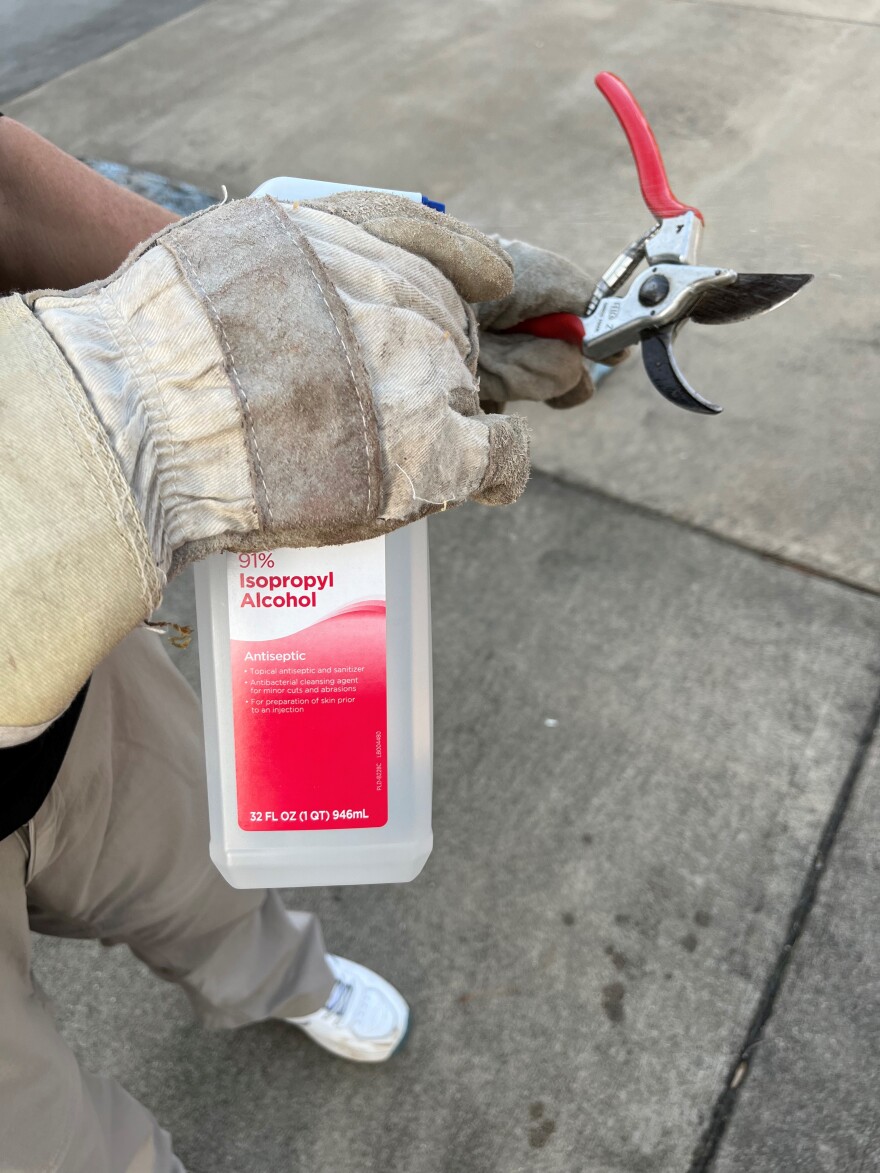While February’s weather has been kinder than usual — which has initiated early blooms on many plants — it’s usually a rough month. For me, the month of March is all about warmth and sunshine due to longer days and warmer nights. As the old saying goes, “March comes in like a lion and goes out like a lamb.”In the garden, spring-flowering bulbs are coloring the landscape along with early spring blooming trees and shrubs. Trees like Cherry, Prunus spp. (some native); Crabapple and Apple, Malus spp.; and Eastern Redbud, Cercis canadensis (native), are a few of these. Spicebush, Lindera benzoin (native), Forsythia, Forsythia spp., Andromeda, Pieris japonica, and different Viburnums, Viburnum spp. (some native), are some of the shrubs that typically color the landscape this time of year. I don’t want to forget my favorite early spring-blooming plants, our native Shadbush or Serviceberry, Amelanchier canadensis and native vining False Jasmine, Gelsemium sempervirens. The yellow False Jasmine flowers are seen high up in trees where the semi-evergreen vines slowly grow.

In the vegetable garden, March is a time of preparation and planting. While it’s time to plant the leafy greens of lettuce, spinach, arugula and Swiss chard, it’s also time to plant the cool season–loving Brassicas of broccoli, cauliflower, cabbages, kohlrabi, collards and kale. There is still time to sow carrot, beet, turnip and pea seeds along with onion sets, leek and potato starts. Indoors is a time of sowing, too.
During March, I sow my tomato, pepper, and eggplant seeds indoors for transplanting outdoors in early May. These plants belong to the Solanaceae Family and require warm soil temperatures of at least 60-65 degrees Fahrenheit degrees for the best growth in the garden.
Before I plant in the garden, I top dress the soil with a quarter-inch (¼”) or more of fresh compost. The compost enriches the soil with organic matter, nutrients, and beneficial microorganisms. The microorganisms help create a mutual relationship between the soil and the plant roots; they aid in making nutrients available to plants and they produce growth hormones in addition to other benefits.Tilling the soil breaks apart the fragile network of fungi and other organisms within the soil, disrupting the vital activities of the fungi, bacteria and other microorganisms. Instead of tilling, gently rake the soil surface to incorporate the compost into the crust of the soil — do your best not to rip into the soil profile. I now cut my vegetables at ground-level at the end of their season rather than pull them out of the ground. I leave the roots to be used as passageways for the soil inhabitants.
We need to think anew and consider how important enriching and conserving the unseen life in the soil is; doing so will benefit your garden and landscape. The richer the soil is in nutrients, the more nutrients will be in the produce harvested from that soil. Healthy soil equals healthy plants which equals healthy people.After planting or sowing, apply an organic mulch to protect the soil surface from erosion, reduce weeds, add organic matter and conserve soil moisture. I apply mulch lightly after sowing seeds, and apply more mulch after the seedlings have formed their first set of true leaves.
Before I plant, I also sketch out the garden crop rotation and seasonal progression for the year. I don’t want to plant any vegetables from the same plant family two to three years in a row in the same space. This helps interrupt disease and insect cycles, prevents nutrient deficiency and increases the soil health with different root remains from varied plant families. I lay out a planting plan to prevent any of my rows from being void of vegetables from now until the end of the season.
To make this task easier, seed companies are offering succession planting calculators to aid garden planning. These calculators ask you to insert the first frost date, and then they calculate the last day of the season when you can plant a specific vegetable and still harvest before the first frost.If I know I will be pulling my garlic in July, using a succession planting calculator, I’ll learn that I can replant the area with carrots. By the way, garlic and carrots grow well together, so I will be sowing carrot seeds between my rows of garlic before I harvest it. I continually reference the book Carrots Love Tomatoes and Roses Love Garlic by Louise Riotte for companion planting guidance during this process. The good news is that once this is done, all I have to do is follow it. Time invested now will reap rewards all season long.

Other March garden tasks include pruning summer-blooming shrubs such as Rose of Sharon and Butterfly Bushes (grow only sterile cultivars, please), Abelias and Summersweet (Clethra spp. is native). These plants bloom anytime from June through frost. Vines such as Honeysuckle (Lonicera sempervirens, native) and Trumpet (Campsis radicans, native) are pruned in March. Only class 3 Clematis vines are pruned in March; this type of clematis blooms in the late summer to early fall. If you grow brambles, prune those back as well. Remember, spring-blooming woody shrubs and trees are pruned after they bloom, typically in June.

As perennial plants emerge, I apply an organic slow-release fertilizer if the results from my soil tests report that extra nutrients are needed. I apply a quarter inch (¼”) of compost over all growing beds. In March, I begin the season-long task of monitoring the garden with morning walks to notice, define, and address any issues before they become a problem.
In the lawn, March is the time to apply crabgrass control. There are corn gluten-based organic products known to control seed germination that can be used as a pre-emergent. This must be applied 2 weeks before the last frost date, which is the end of March in USDA zone 7. There are also cinnamon-based products that will kill grass that can only be used as a spot treatment for crabgrass later in the season. I have not used either product, so please share the results if you have!
Finally, during March is when I begin fertilizing my houseplants for the season. Hallelujah, March is here, and I am doing the Snoopy Happy Dance!
Happy Gardening!
- Peggy Singlemann, host and co-producer of Virginia Home Grown & owner of RVA Gardener LLC


